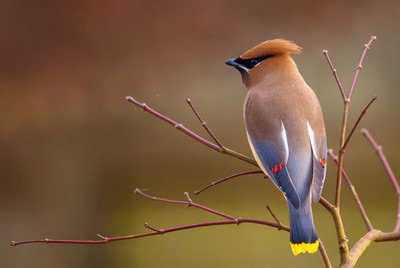Backyard bird count goes global, shatters records

From Antarctica to Afghanistan, bird watchers from 101 countries made history in the first global Great Backyard Bird Count (GBBC), Feb. 15-18.
In the largest worldwide bird count ever, bird-watchers set new records, counting more than 25 million birds on 116,000 checklists in four days - and recording 3,138 species, nearly one-third of the world's total bird species. The data will continue to flow in until March 1.
Building on the success of the GBBC in the United States and Canada for the past 15 years, the Cornell Lab of Ornithology, Audubon and Bird Studies Canada opened the count to the world for the first time this year, powered by eBird, a system that enables people to report birds globally in real time and explore the results online. Bird-watchers are invited to keep counting every day of the year at www.eBird.org.
"This is a milestone for citizen science in so many respects - number of species, diversity of countries involved, total participants and number of individual birds recorded," says Cornell Lab of Ornithology Director John Fitzpatrick. "We hope this is just the start of something far larger, engaging the whole world in creating a detailed annual snapshot of how all our planet's birds are faring as the years go by."
Some key preliminary findings:
- Top five most reported species (reported on highest number of checklists): northern cardinal, dark-eyed junco, mourning dove, downy woodpecker, house finch;
- Top five most common birds (most individuals reported): snow goose, Canada goose, red-winged blackbird, European starling, American coot;
- Finch invasion: A massive number of northern finch species moved into the United States, including the common redpoll, reported in a record 36 states. Scientists believe these periodic movements are related to natural fluctuations in crops of conifer cones and other seeds in Canada.
- Hurricane Sandy: The weather system that caused Sandy's landfall also blew some European birds to North America, and evidence of this is still showing up in GBBC results. The colorful, crested northern lapwing was reported in Georgia, New Jersey and Massachusetts during the GBBC.
- GBBC first: A red-flanked bluetail has wintered at Queens Park, Vancouver, and was also reported in the GBBC for the first time. This British Columbia bird has been drawing bird-watchers from all over the United States and Canada hoping to see this rarity. This little thrush is one of the only birds in the world with a striking blue tail and is native to Asia: the other GBBC report of the red-flanked bluetail this year was from Japan.
The Great Backyard Bird Count is made possible in part thanks to founding sponsor Wild Birds Unlimited.
For more information, visit www.birdcount.org.
Media Contact
Get Cornell news delivered right to your inbox.
Subscribe